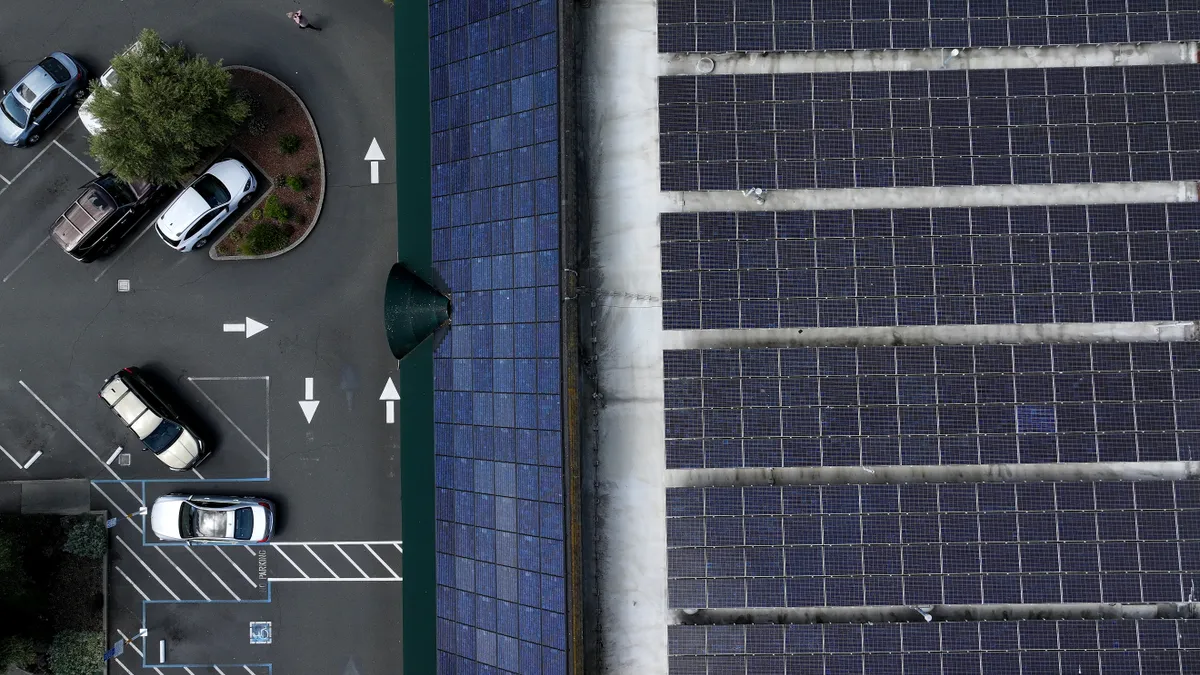Dive Brief:
- The Port of Los Angeles will be the site of a solar+storage pilot program which aims to show how carbon-free energy solutions can help make marine terminal operations more efficient and have less environmental impact, PV Magazine reports.
- The $27 million project includes a 1 MW rooftop solar array, 2.6 MWh battery system and a number of electric vehicles and cargo handling equipment that will be integrated into the Port's operations.
- Burns & McDonnell was selected to provide the engineering and overall project management services for the Green Omni Terminal Demonstration Project.
Dive Insight:
The Green Omni project is being partially funded by $14.5 million from the California Air Resources Board, as the state continues its efforts to reduce greenhouse gases and other emissions while also making industrial facilities more efficient.
“The Port of Los Angeles is the busiest gateway for commerce in America, so what better place to demonstrate an all-new approach to eliminating greenhouse gases and other harmful emissions,” Renita Mollman, vice president and general manager of Burns & McDonnell’s California region, said in a statement.
The Port and Pasha launched the project as "a proving ground for how zero and near-zero emissions technologies can dramatically reduce pollutants and improve energy resiliency at marine terminals and industrial facilities around the world," according to the press release.
The pilot will integrate electric vehicles and cargo handling equipment into terminal operations, along with a storage and solar system that will form a clean energy microgrid capable of powering terminal operations in the event of a wider outage. Engineering work on the project will begin this month, with construction slated for October.
The project is expected to be complete by the middle of next year, with Matt Wartian serving as project manager through engineering design, construction and startup. He said Burns & McDonnell has already successfully executed a number of microgrid projects incorporating solar and zero emissions technology.
"But the Green Omni Terminal Project will set a whole new standard,” Wartian said. “We expect a number of other facilities will be launching similar zero-emissions projects based on the results from the Green Omni Terminal.”
The solar system will operate in parallel with the Los Angeles area grid and will be able to island itself in an outage. Keeping portions of the Omni Terminal operational during an outage will allow it to function as a depot for emergency goods and services to the broader Southern California region.
Burns & McDonnell also said the terminal also will feature charging infrastructure that converts the AC to DC power needed for battery-powered vehicles and equipment. Electric equipment at the terminal will include: battery-powered drayage trucks and yard tractors, and two 21-ton forklifts a top handler for loading and unloading goods.
And a ShoreCat Marine Exhaust Treatment System is expected to capture more than 90% of emissions, including CO2 emissions, from stacks of berthed ships at the terminal. In total, improvements at the Green Omni Terminal are expected to reduce carbon dioxide emissions by 3,230 tons per year, the project developers said, and will be the equivalent of removing 14,100 vehicles from the roadways in Southern California.
The project "will be a scalable model to upgrade the 26 other terminals at the Port of Los Angeles, as well as other terminals worldwide” said Wartian. “Design-build project delivery will also demonstrate why it is the best system to make these complex improvements and upgrades with no interruption to ongoing terminal operations.”














